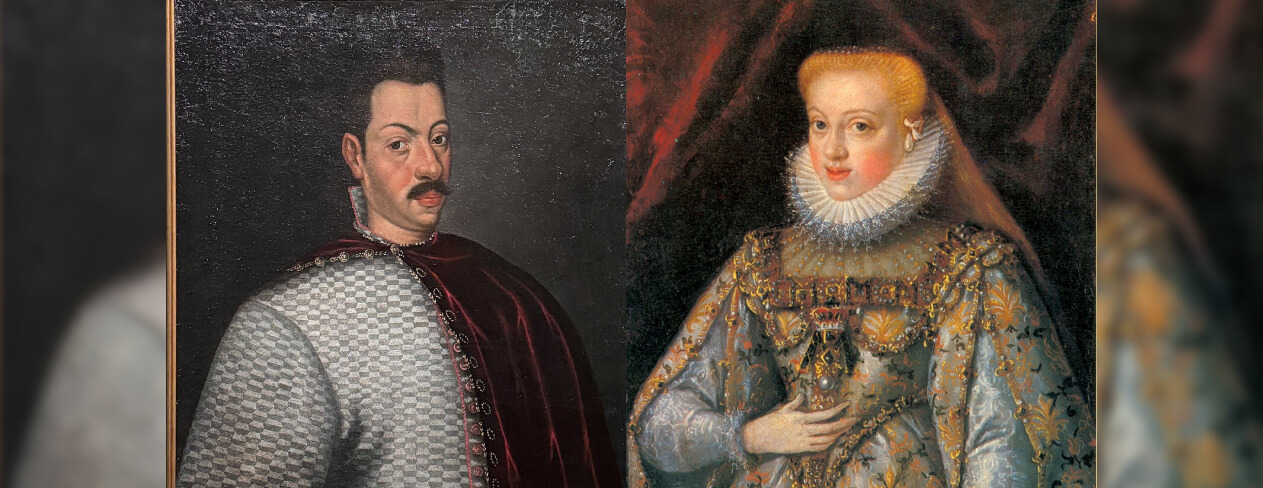
Archduchess Maria Christina and Sigismund Báthory, Prince of Transylvania, were married on 6 August 1595.
For a long time, the Principality of Transylvania had been a vassal state of the Ottoman Empire. Its political life was a bewildering tangle of local noble ambitions, rival cousins, religious conflicts, extravagant conspiracies, and secret assassinations. In the early 1590s, Sigismund joined the Holy League, formed to resist Ottoman power. Seeking a strategic alliance with the powerful Habsburgs, he requested permission from Emperor Rudolf to marry one of his nieces. Of the three portraits shown to the groom-to-be, he chose Maria Christina.
What exactly happened on their wedding night has provoked the wildest speculation. Sigismund claimed his political enemies had used witchcraft to render him impotent. On the other hand, no contemporary source ever reported any interest of his in women — to put it mildly. In any case, the marriage remained unconsummated, and the very next day the brand-new Princess of Transylvania was sent to a remote mountain fortress to live in seclusion.
Sigismund’s mental stability and self-confidence appear to have suffered from both political turmoil and his failed marriage. After several abdications — some only proposed, others briefly enacted — he eventually resigned his princely title and retired to an estate in Bohemia. By then, the pope had declared the marriage invalid, and Maria Christina, weary and worn out by her uncertain existence, returned to Austria. A few years later, she joined one of her sisters in a convent, where she died in 1621 at the age of 46.
Access to the Metatext via placing an order for an augmented product. See Terms of Use